Top 10 Texas Weeds to Know
Want to know what Texas weeds are popping up in your garden bed or lawn? I’m here to help! Knowledge is power when it comes to weeding. Knowing what the plant is is the first step before trying to get rid of it.
Start by downloading my FREE 10 Common Texas Weeds PDF! I want to help you identify the most common weeds and provide you with information about their benefits (or lack of benefits) so you can make good decisions before you pull.
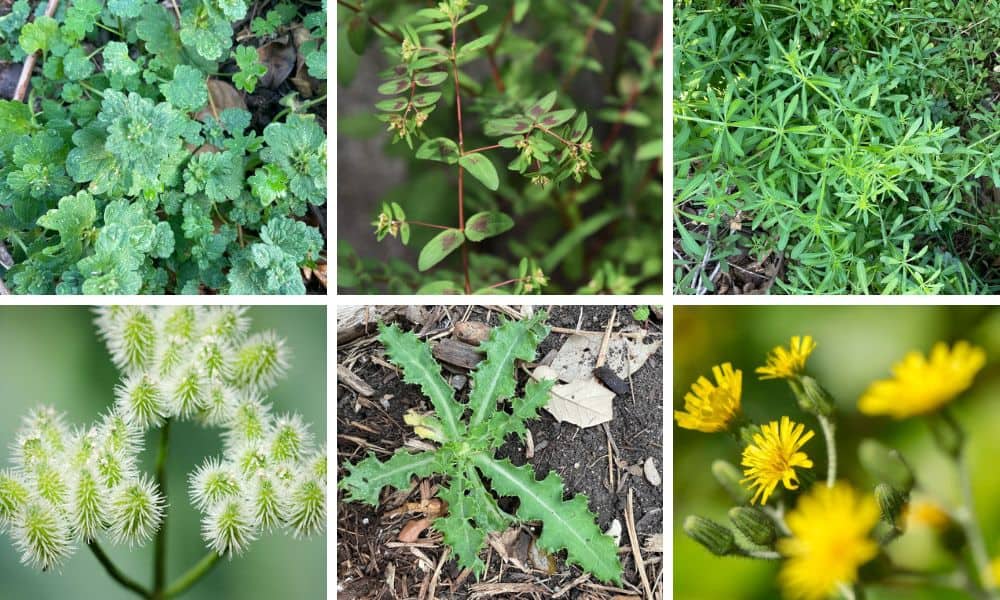
Late winter and early spring is when the weeds start to emerge here in Texas.
10 Common Texas Weeds
I’ve included both the common names and scientific (Latin) names for each weed. While these are the specific garden and lawn weeds I see most often around San Antonio, Texas where I live, many are common throughout much of the United States.
1) Bedstraw
Bedstraw can form a dense, tangled mat and carpet an area quickly starting mid-winter. Tiny hairs act like Velcro and stick to you (which is kind of fun to try – pull out a length of Bedstraw and stick it to your shirt or pants!).
It gets the common name Bedstraw because it used to be used to fill mattresses. It is an annual weed that dies back in late spring.
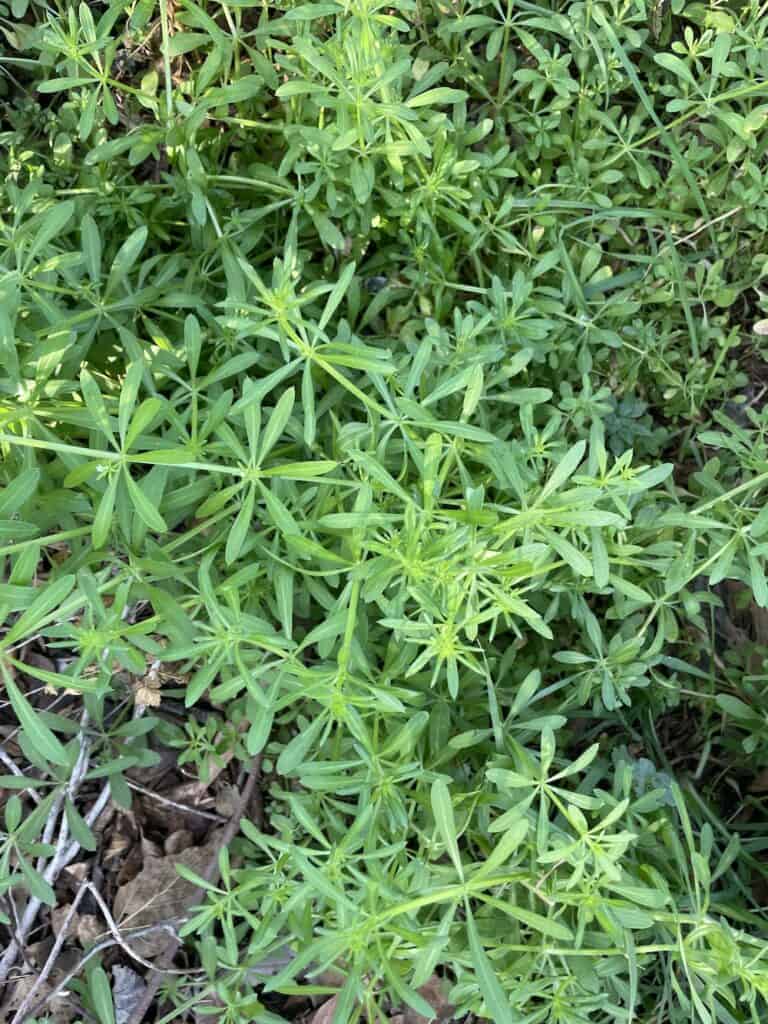
- Scientific Name: Galium aparine
- Other Common Names: Catchweed Bedstraw, Cleavers, Sticky Weed, Sticky Willy
- Native to: Most of United States
- Benefits: Edible raw or cooked.
- Look for it: Late winter (January / February here in San Antonio)
- Pull or keep? Pull it before it goes to seed to prevent further spread next year.
2) Henbit
Henbit is one of the more common winter weeds I see in garden beds and lawns. Not a native plant, it was introduced in the United States in the 1700s. Its purple flowers provide nectar to pollinators during the time of year when little else is blooming.
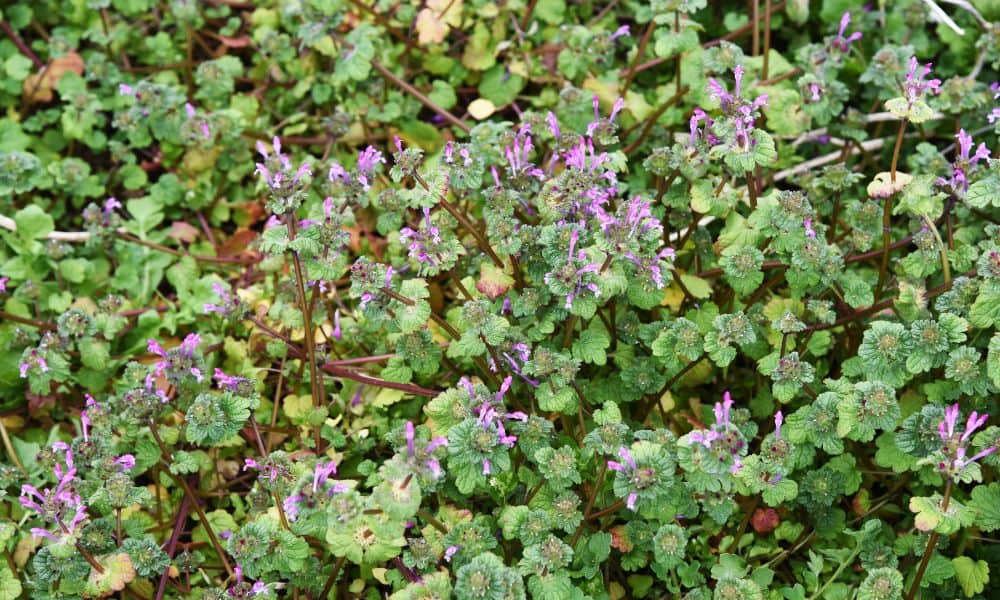
The common name “Henbit” comes from the fact that chickens like to eat this! It is edible for humans too.
- Scientific Name: Lamium amplexicaule
- Native to: Eurasia and western Asia
- Benefits: Leaves can be eaten raw or cooked, and can be used in tea. Flowers provide nectar and pollen to pollinators.
- Look for it: Germinates in the fall and starts to bloom by late winter. Look for its square stems (it is part of the Mint family of plants).
- Pull or keep? I say keep!
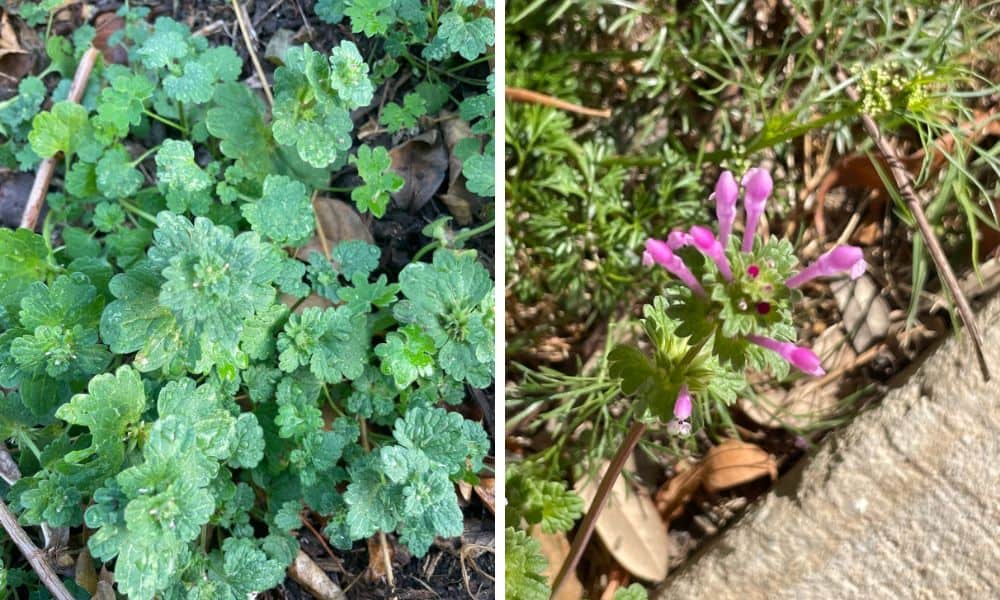
3) Hedge Parsley
Hedge Parsley is known for its dainty white flowers that turn into sticky seed heads that grasp onto your socks and pants! In fact, one of its common names is “Sock Destroyer!” It is part of the carrot family with leaves that resemble parsley and Queen Anne’s Lace.
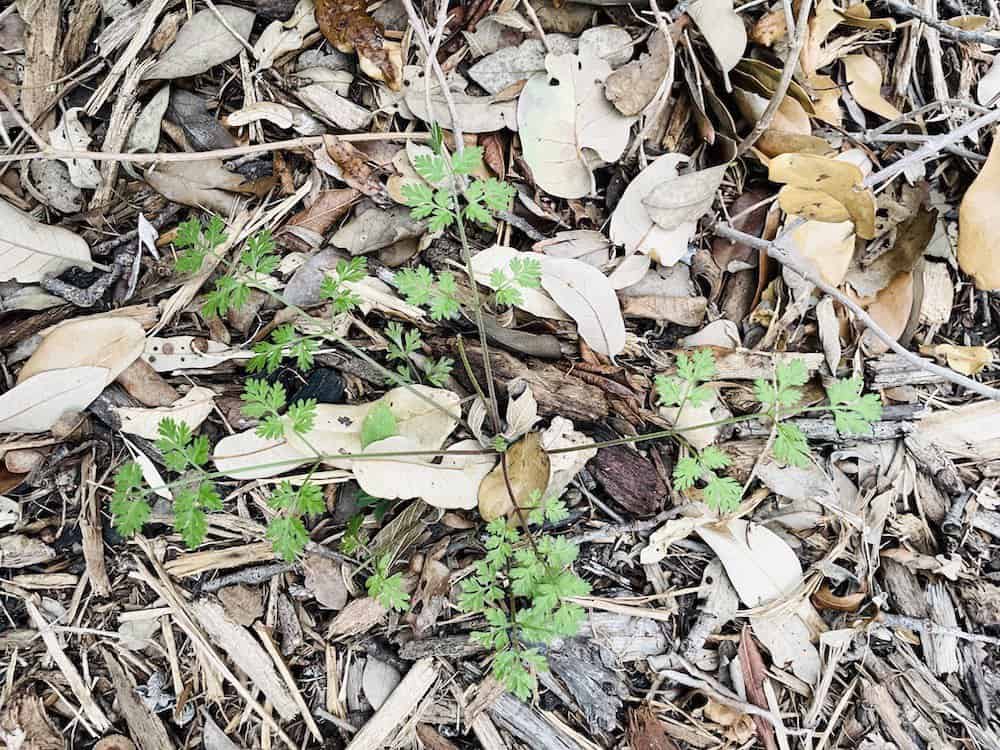
- Scientific Name: Torilis arvensis
- Other Common Names: Beggar’s Tick, Sock Destroyer
- Native to: Eurasia
- Benefits: Pollinators visit its flowers. It is a host plant for the Black Swallowtail caterpillar.
- Look for it: Notice seedlings starting in January. Blooms by June.
- Pull or keep? I say pull before it goes to seed! Especially if you have pets. However it is a Swallowtail host plant so definitely don’t pull if you see caterpillars on it.
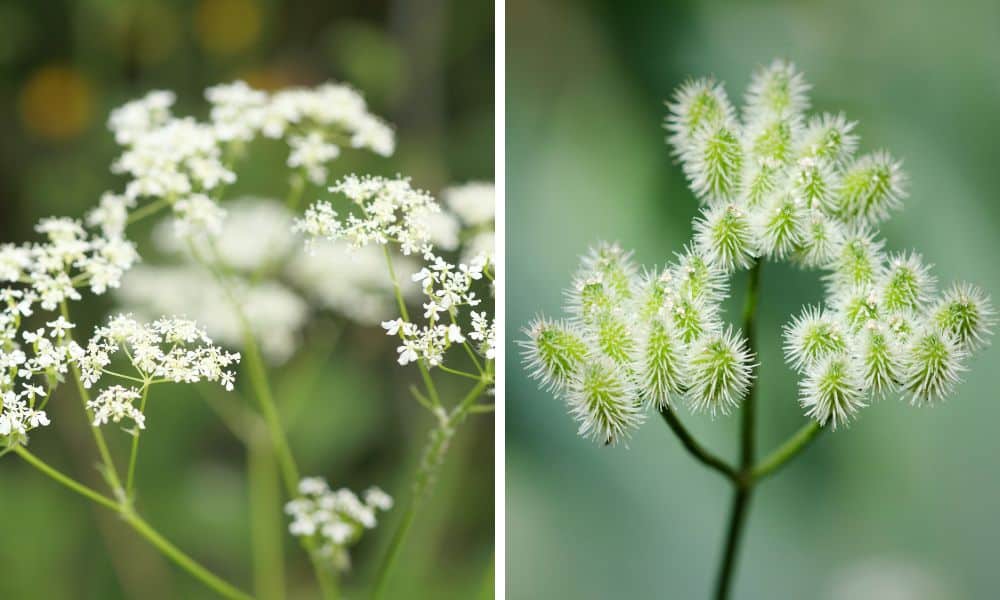
4) Sow Thistle
This annual broadleaf weed produces yellow flowers similar to a Dandelion. However, rather than a single flower on a stem, there are several.
There are different species of Sowthistle, but I think this one is Prickly Sowthistle (Sonchus asper). Its leaves can be prickly to the touch.
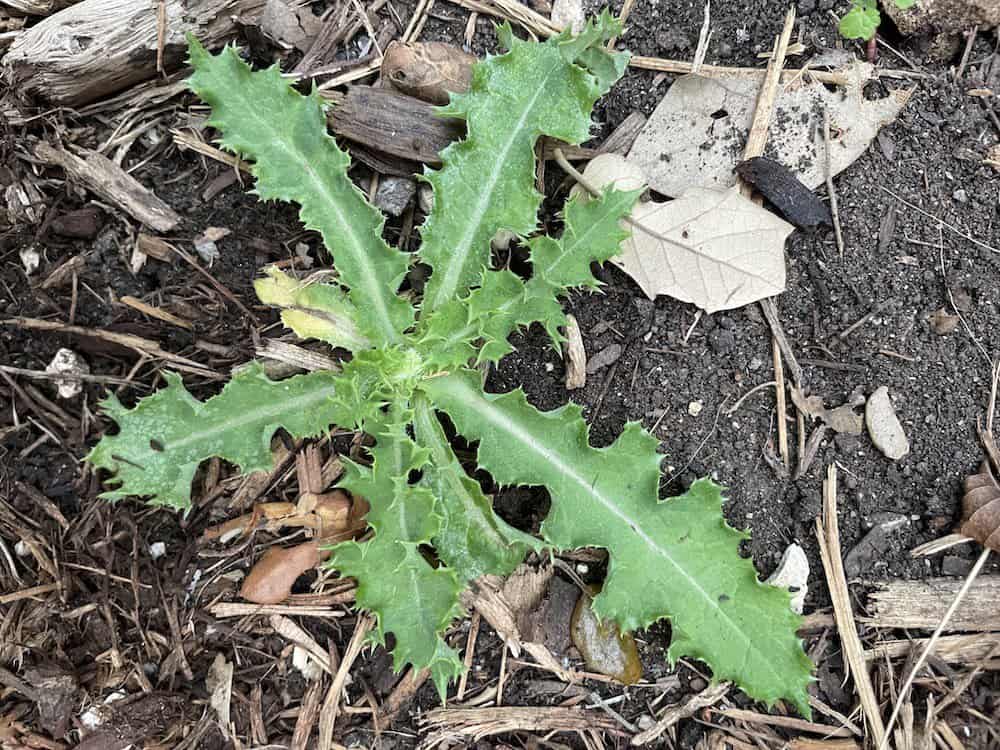
- Scientific Name: Sonchus asper
- Native to: Eurasia and north Africa
- Benefits: Pollen and nectar for pollinators.
- Look for it: Basal rosettes start to form in January.
- Pull or keep? I say pull! They are easiest to pull when they are small.
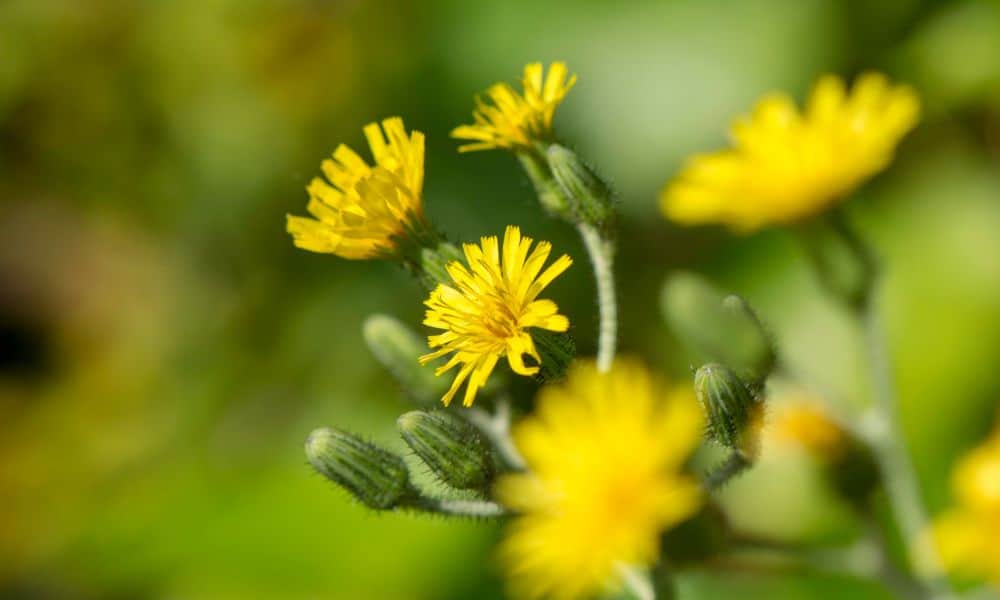
5) Dandelion
Perhaps one of the most well-known broadleaf weeds, and possibly the most beloved! I have fond memories of blowing their fluffy seed heads in early summer as a kid.
If you want to have some Dandelion nectar for pollinators, the best strategy is to pull them before the flower head goes to seed. Each plant can produce up to 20,000 viable seeds!
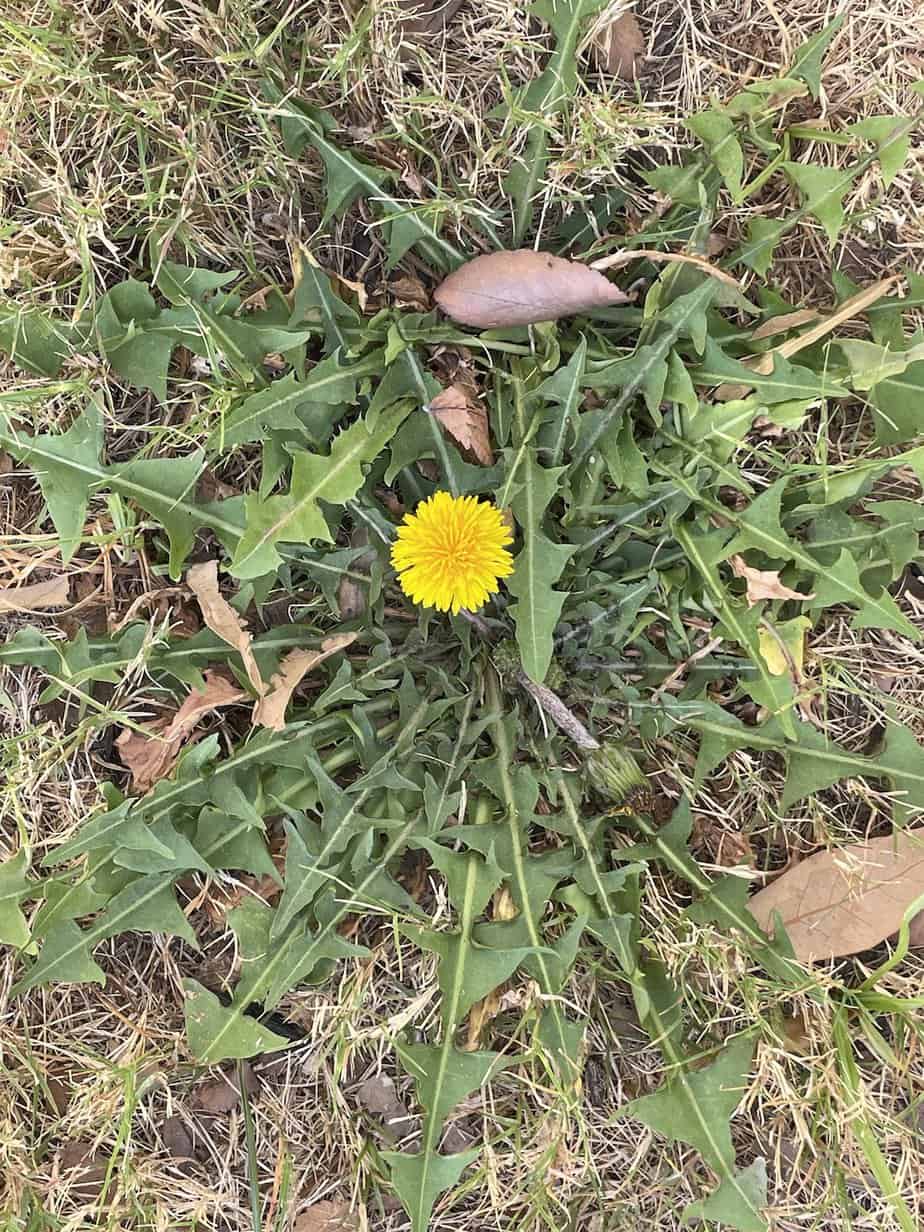
- Scientific Name: Taraxacum officinale
- Native to: Eurasia
- Benefits: Nectar and pollen for pollinators, especially in spring before other flowers are blooming. Edible and nutritious!
- Look for it: Basal rosettes in early winter. Flowers late winter / early spring.
- Pull or keep? Up to you! Dandelions do have a thick taproot. Try to pull when the ground is moist for best success.
6) Spotted Spurge
Spurge is annual weed native to Texas. It forms a mat of small leaves along the ground, growing from a single taproot. The leaves will sometimes have a red spot towards their base.
Handle carefully – the sap in Spurge stems can be an eye and skin irritant. It is not edible.
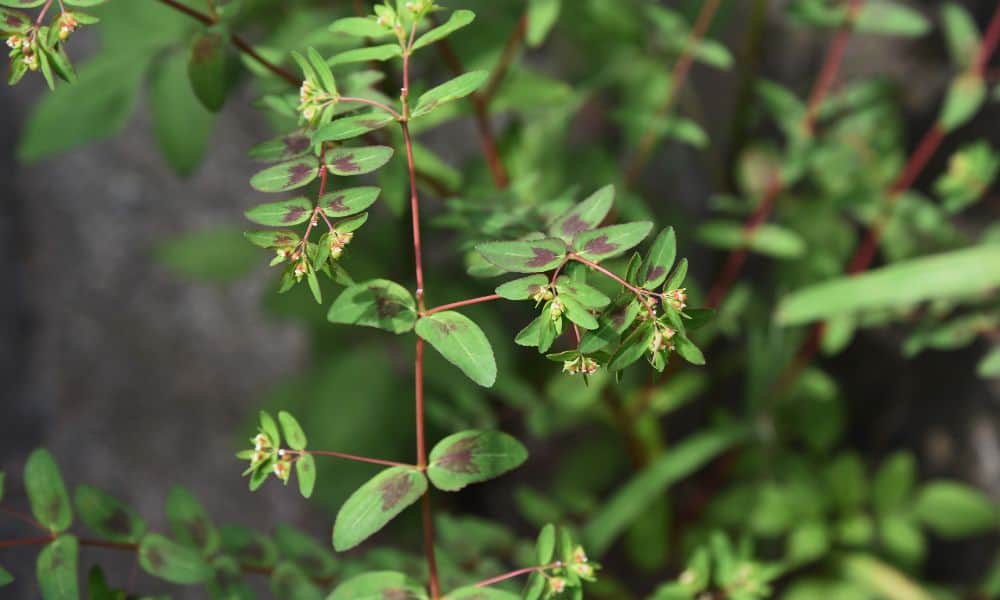
- Scientific Name: Euphorbia maculata
- Other Common Names: Spotted Sandmat
- Native to: eastern North America (including Texas)
- Look for it: Late spring / early summer
- Pull or keep? It is a native Texas plant. However, if you don’t want it growing in a particular area, I recommend pulling it before it goes to seed.
7) Common Chickweed
Winter annual weed with small white flowers that runs along the ground similar to Spurge (above). Native to Eurasia, it is listed on the Invasive Plant Atlas of the US. Its dense growth habit can crowd out wildflower seedlings and other spring annuals.
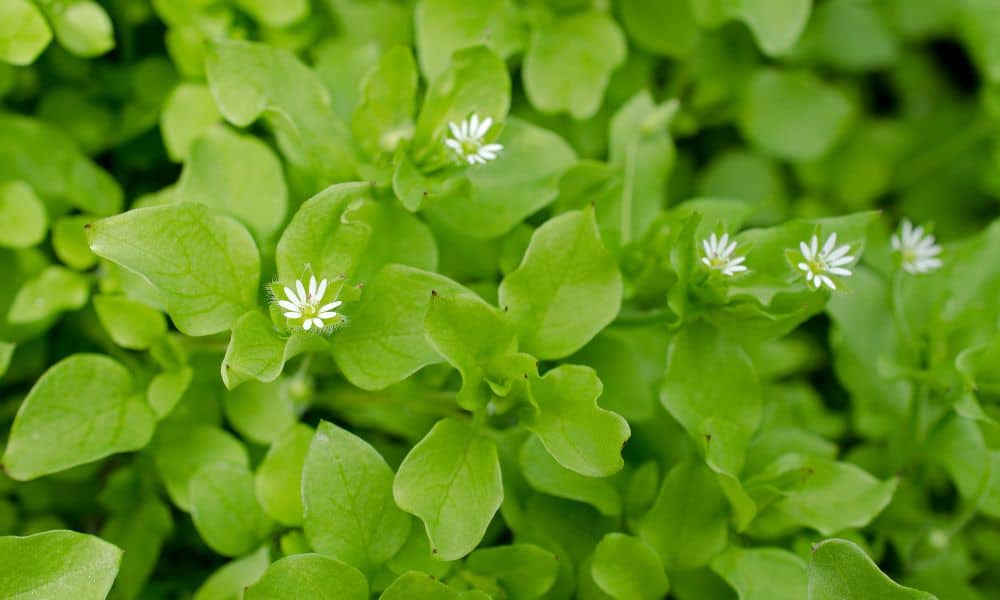
- Scientific Name: Stellaria media
- Native to: Eurasia
- Benefits: Pollen and nectar for pollinators. Edible raw or cooked if not consumed in large quantities.
- Look for it: Begins growth in winter, blooms in early spring.
- Pull or keep? I say pull it since it is listed on the the Invasive Plant Atlas of the US.
8) Carolina Dichondra
Another mat-forming weed with distinctive round leaves. A native Texas plant that spreads by runners in shady areas.
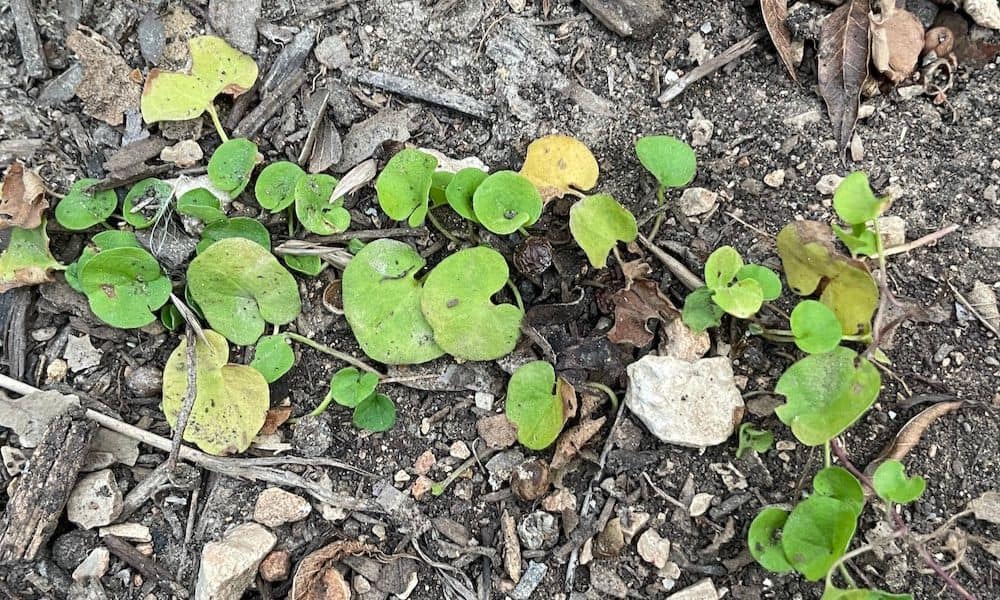
- Scientific Name: Dichondra carolinensis
- Other Common Names: Ponyfoot, Carolina Ponyfoot
- Native to: Southeastern US and Bermuda
- Benefits: Edible but bitter. Small blooms for pollinators from March – September
- Look for it: Throughout the year.
- Pull or keep? I say keep! It is native and can make for a nice groundcover, similar to Silver Ponyfoot.
9) Bermuda Grass
Bermuda Grass is a common choice for a new lawn in the southern states. It is also one of the most prevalent weeds in a garden bed. Its underground rhizomes and stolons love to spread beyond the lawn and into gardens.
This annual grassy weed is considered an invasive species and the bane of many gardeners in Central Texas! It can be next to impossible to eradicate and may require post-emergent herbicides as a last resort.
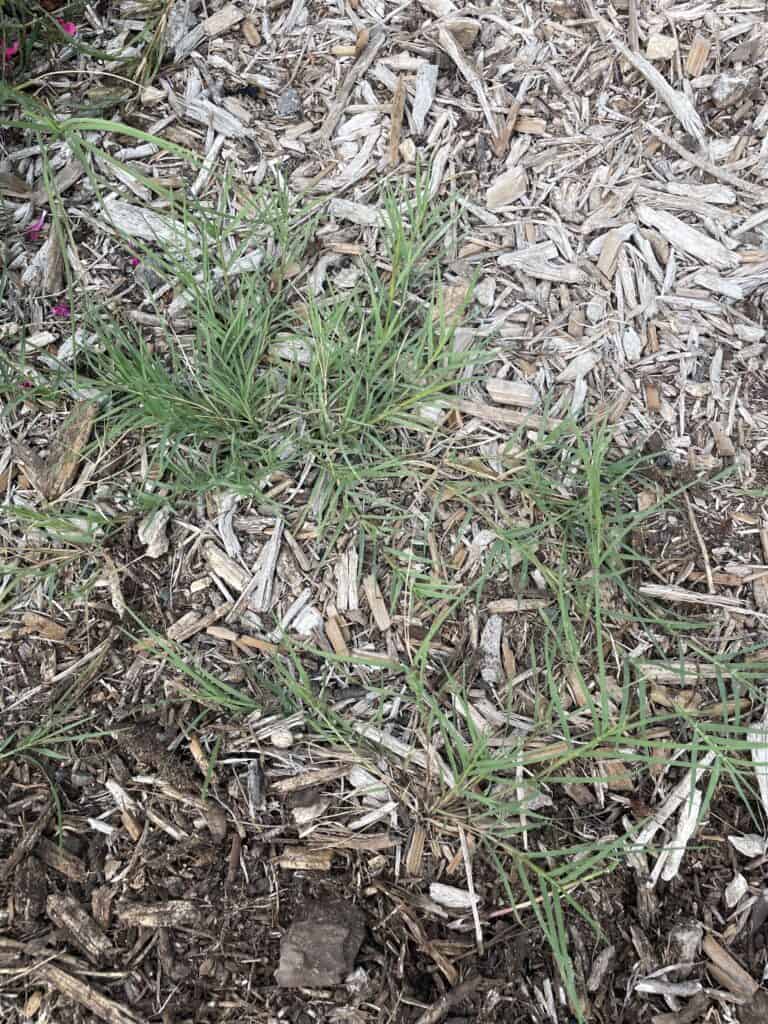
- Scientific Name: Cynodon dactylon
- Native to: Africa
- Benefits: Host plant for Fiery Skipper and Southern Skipperling
- Look for it: Always!
- Pull or keep? Pull! Make sure to remove all underground rhizomes or it will be back. Covering it with mulch, or even black plastic does not stop its growth. Liquid weed control like Roundup may be required.
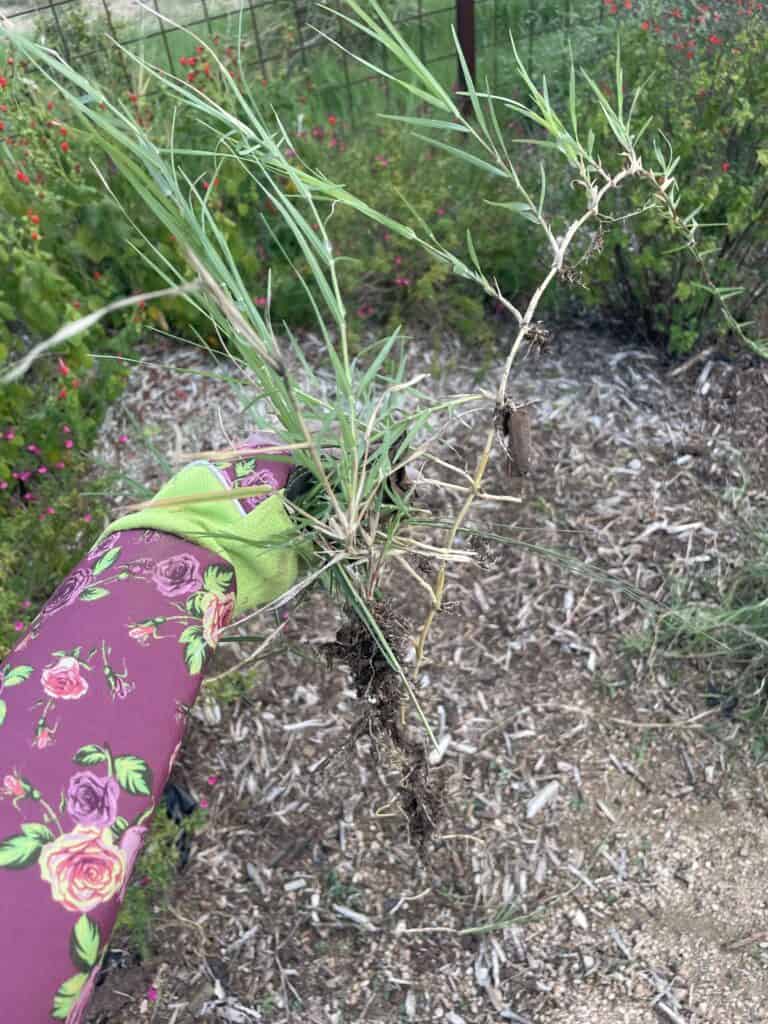
If you are looking for turf grass for your lawn, I would recommend St. Augustine grass over Bermuda Grass. It is much less invasive when it comes to taking over garden beds. Even better, try a native grass such as Buffalo Grass, which requires minimal mowing.
10) Nutsedge
Nutsedge is another of the grassy weeds that appear in late winter and early spring in Texas. Nutsedge spreads by rhizomes rather than seeds. Pulling it can activate dormant tubers, causing it to spread more.
There are many species of Nutsedge, found in the United States, some which are native and some which are introduced. Two common types of Nutsedge are Yellow Nutsedge and Purple Nutsedge. Both are considered weeds, but some Yellow Nutsedge is native to parts of the United States. Purple Nutsedge is native to Eurasia and listed on the Invasive Plant Atlas of the US.
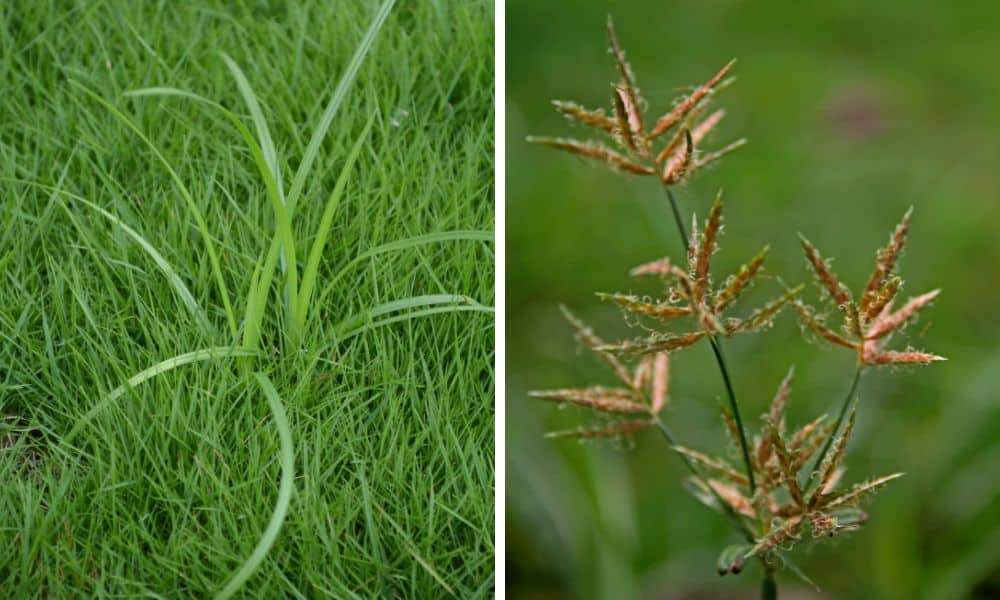
- Scientific Name: Cyperus rotundus (Purple Nutsedge), Cyperus esculentus (Yellow Nutsedge)
- Native to: Eurasia (Purple Nutsedge) and parts of United States (Yellow Nutsedge)
- Benefits: N/A
- Look for it: Later winter / early spring
- Pull or keep? Pulling can activate dormant tubers, causing them to spread more. You want to remove as much of the nutlet and rhizomes at the base of the grass as you can. If you have a limited amount of Nutsedge and stay on top of pulling it, you can eventually weaken it and eradicate it.
Bonus “Weed”: Horseherb
This native ground cover with dainty yellow flowers (also called Straggler Daisy) is considered a weed by many Texans, and a prized native ground cover by many others!
Its rapid spread in a disturbed area can make it hard to control, but also makes it a great candidate for a native groundcover in bare spots in your lawn where grass won’t grow. It prefers more shade to sun.
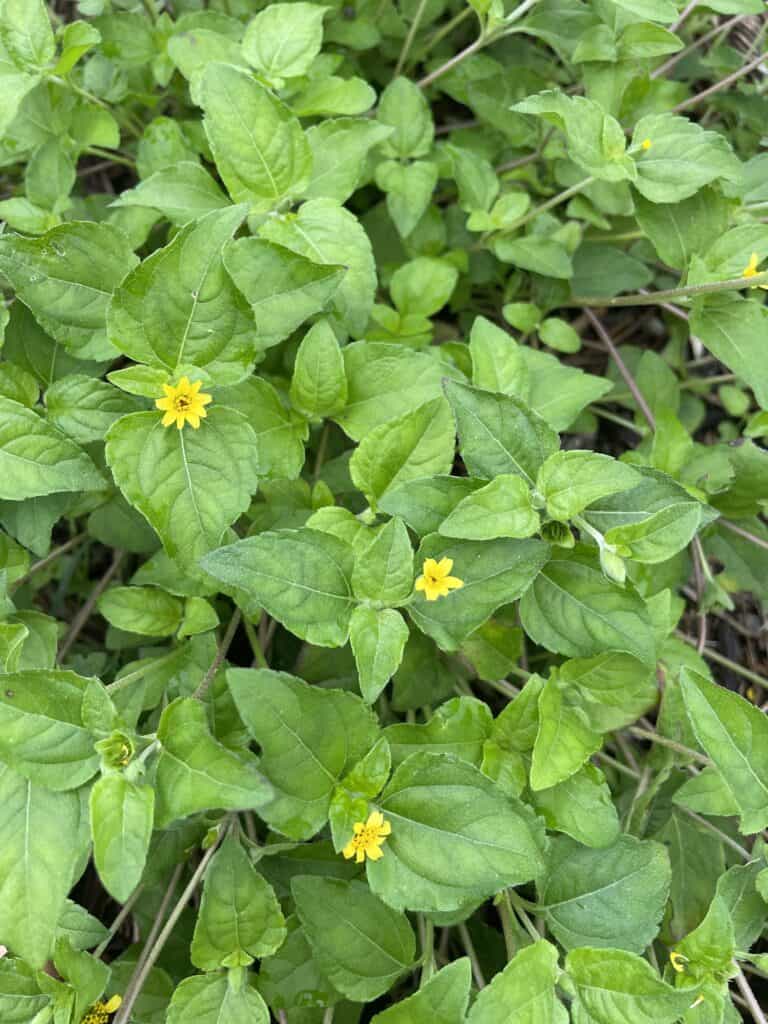
Horseherb tends to go dormant with the heat of late summer and again after a freeze in the winter.
- Scientific Name: Calyptocarpus vialis
- Other Common Names: Straggler Daisy
- Native to: Southern United States
- Benefits: Nectar and pollen for pollinators
- Look for it: Early spring through fall
- Pull or keep? Keep!
Download the Free Common Texas Weeds PDF
Download this FREE PDF to help you identify the weeds in your yard. It contains a photo and information each of them.
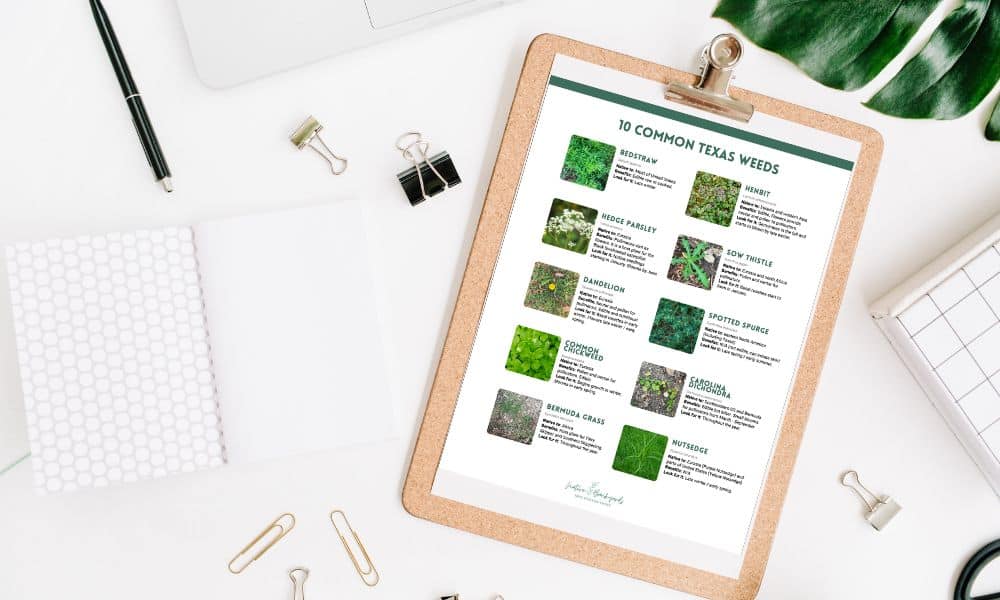
Keep Texas Weeds Out of the Garden with This Hack
A weed problem is the first way to get discouraged as a new gardener. However, keep those herbicides stored away. Let’s stop using chemicals in our lawns and gardens! Want to keep pesky weeds out of your garden bed before they start? The best way to do that is with this cardboard and mulch method.
This will be your most natural, best defense against weeds. The cardboard will break down overtime along with the mulch. Just cut holes in the cardboard to add new plants.
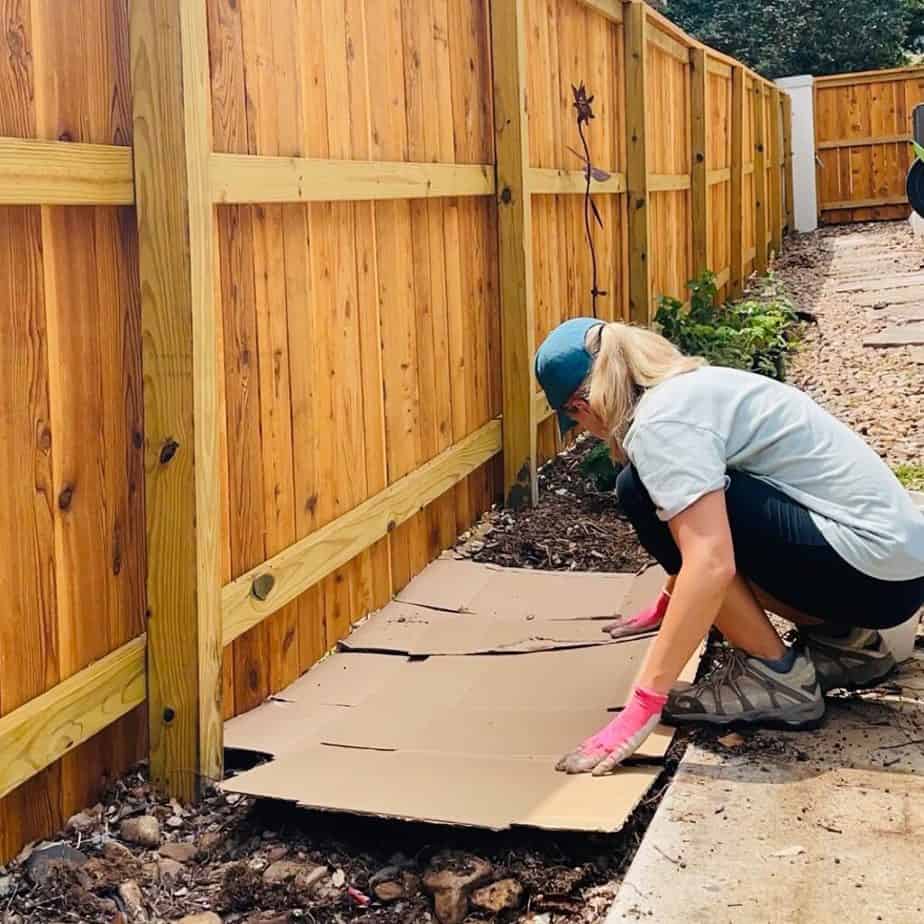
My Favorite Weeding Tool
While the cardboard method is the best deterrent for weeds, if you do have some popping up in your garden, a hori hori knife (affiliate link) is the most effective way to remove them. It is easiest to weed after a rain when the soil is moist.
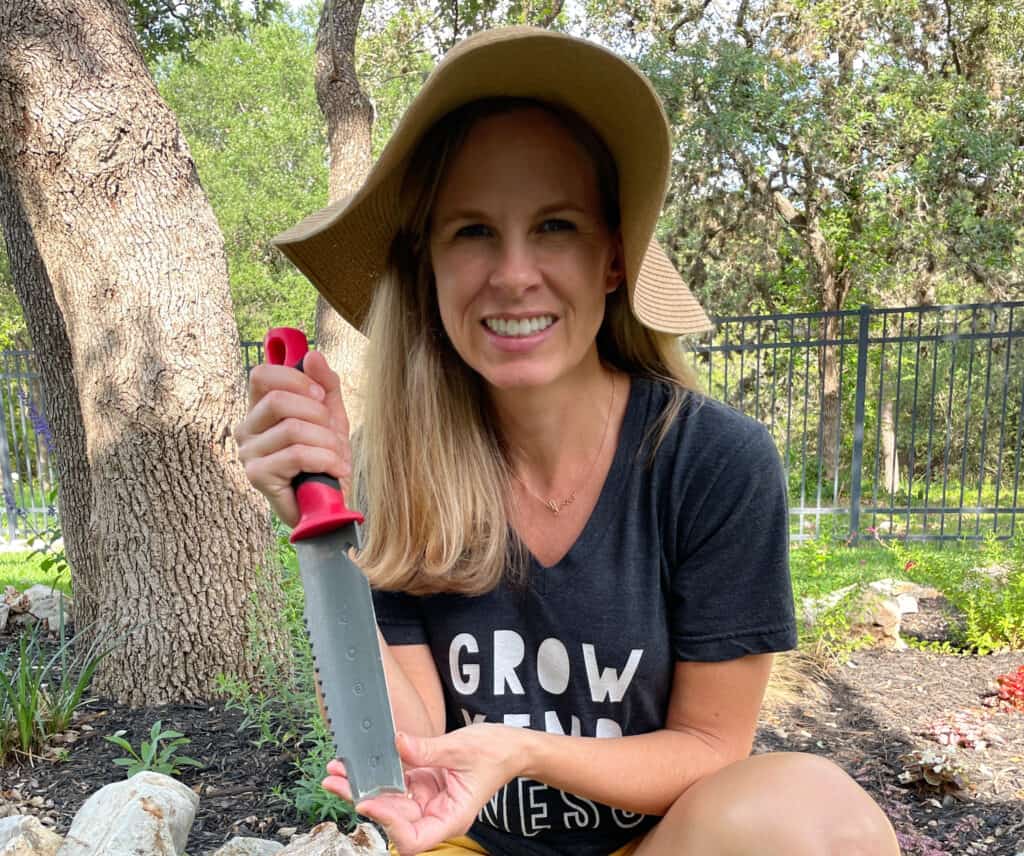
Have a lot of grass weeds that require a lot of lawn care? Ditch your lawn and convert it to a low-maintenance native plant bed instead!
Native plants are beautiful and require little supplemental water or care once established. For best results, start with this list of Top 15 Texas native plants.
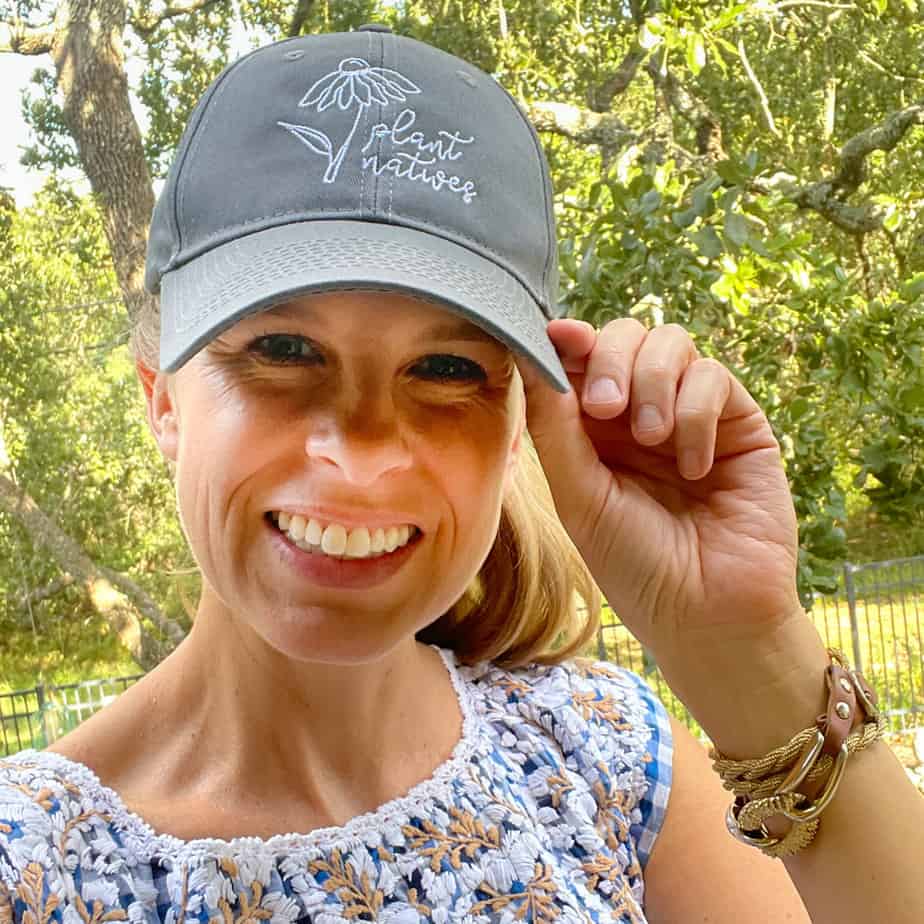
Welcome to Native Backyards! I’m Haeley from San Antonio, Texas, and I want to help you grow more native plants.
I have seen firsthand how the right plants can bring your yard to life with butterflies, bees, and birds. I’ve transformed my yard with Texas natives and I’m excited to share what I’ve learned with you.
Join my newsletter here! – each week I’ll send you helpful tips to make your native plant garden a reality!
Want to learn more about me and my garden? Check out my About page!

Hi, Haeley. Just wanted to let you know that I purchased the Hori Hori knife on your reccomendation. I keep it in my bucket that a carry around the yard that has my regularly used tools. I think I use it every work session. It is GREAT!! Thanks for an excellent tip. RL